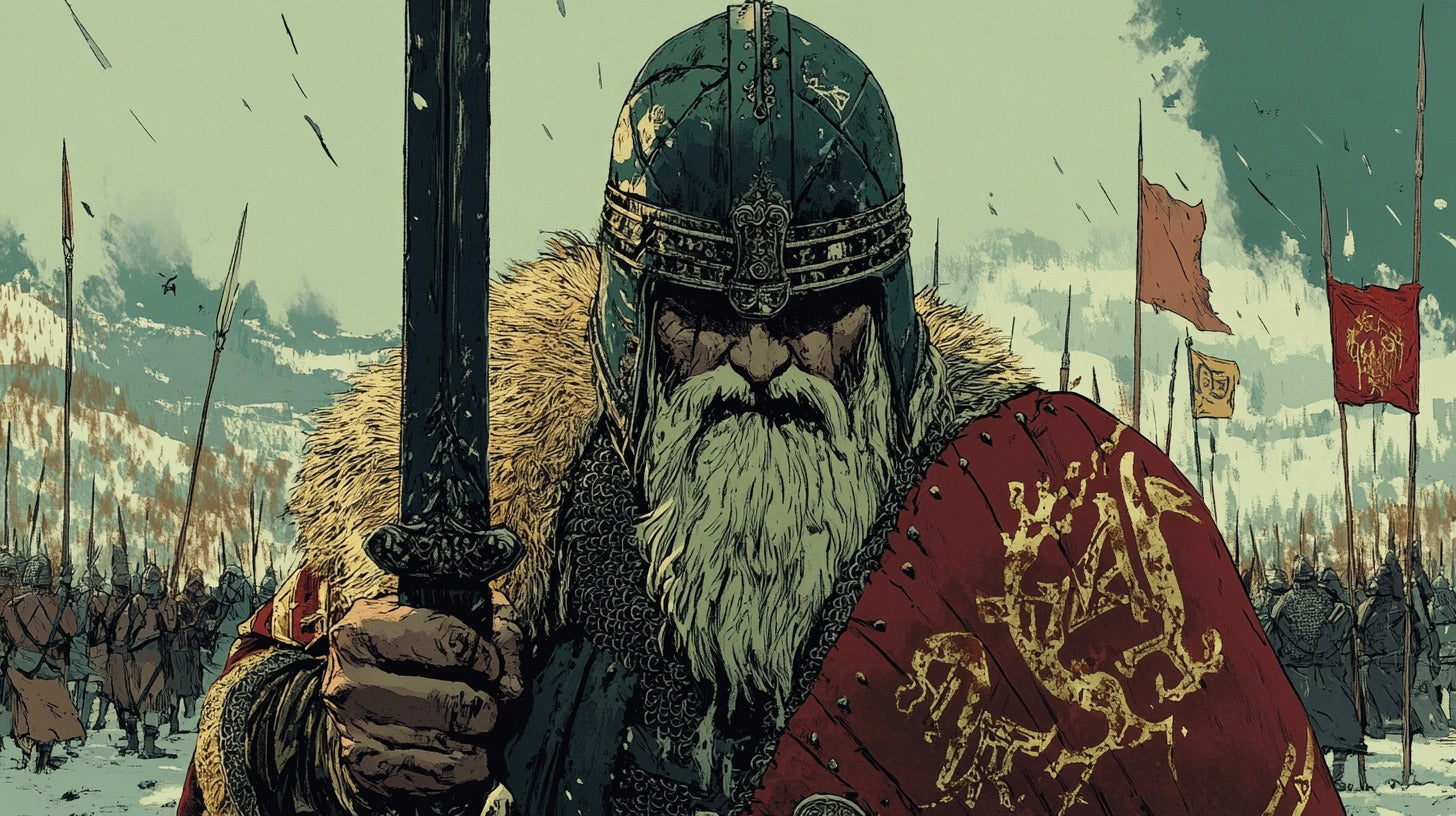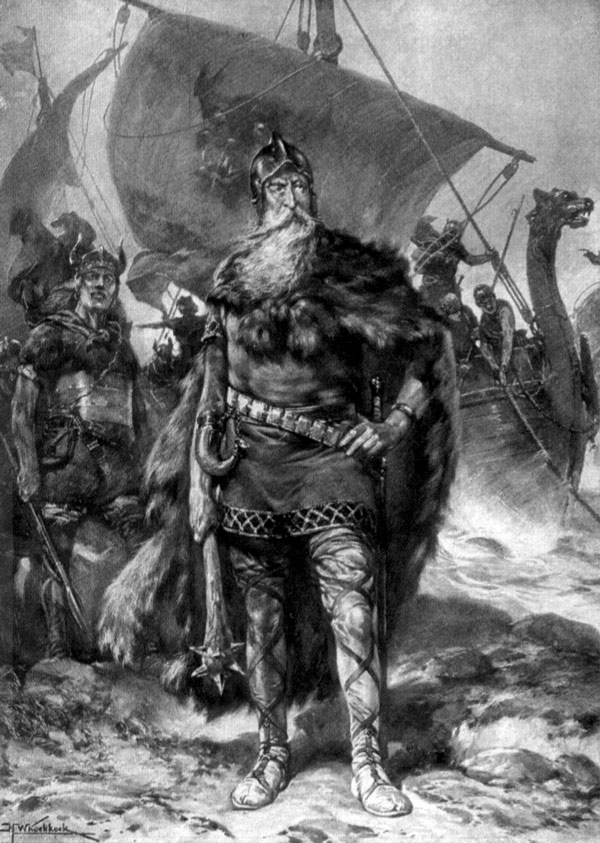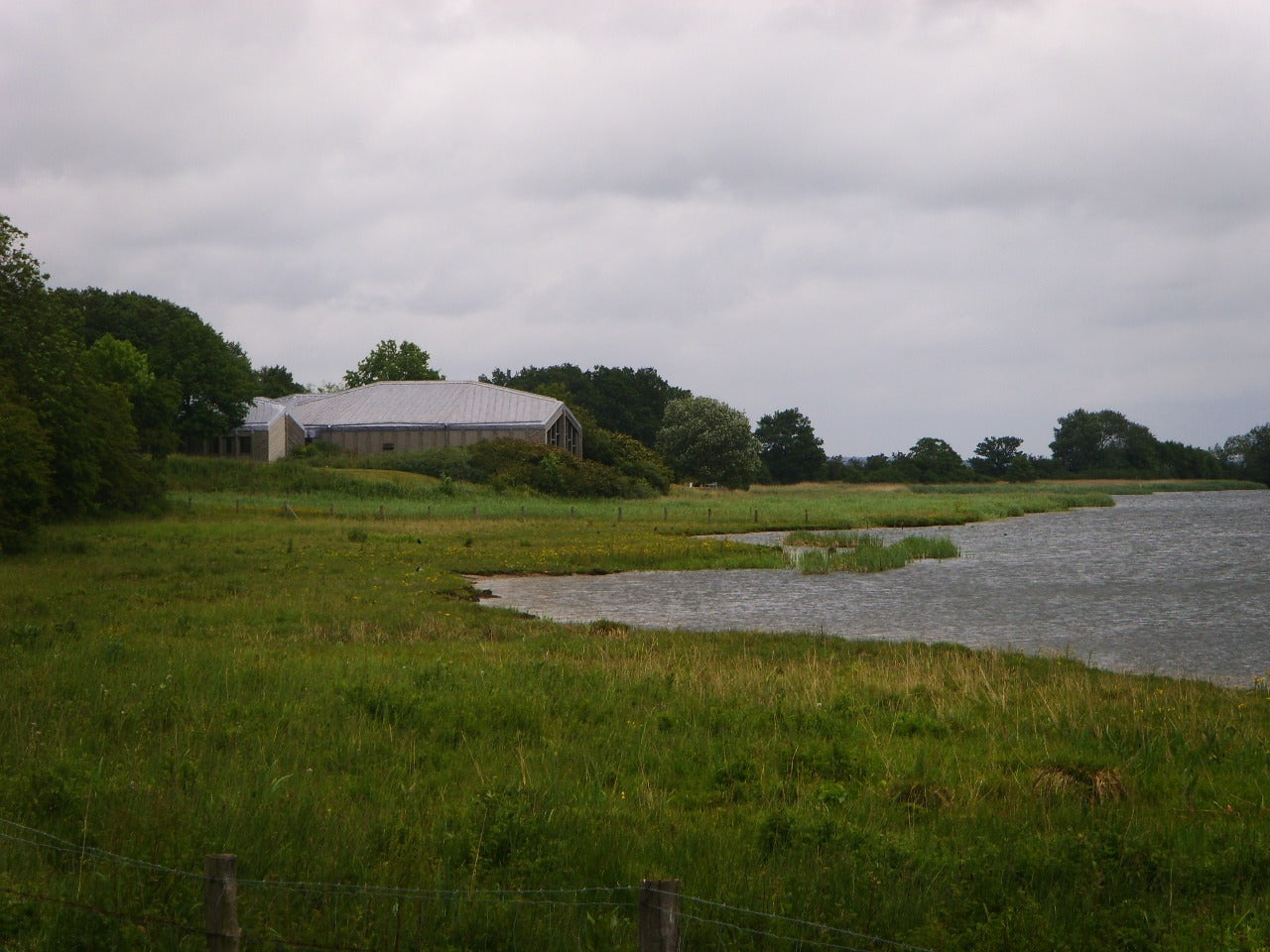
Rurik: Founder of the Dynasty that Shaped Russian History
Rurik, a semi-legendary Varangian chieftain, stands as a pivotal figure in the early history of Eastern Europe and the foundation of what would eventually become Russia. As the founder of the Rurik Dynasty, which ruled various East Slavic territories for over seven centuries, his story intertwines with the very origins of the Russian state. This article explores the life, legend, and lasting impact of Rurik, set against the backdrop of the turbulent 9th century Eastern European landscape.
Origins and Early Life

Rurik and his brothers Sineus and Truvor arrive at Ladoga. Painted by Viktor Vasnetsov (c. 1913)
Legendary Background
The exact origins of Rurik are shrouded in mystery and legend. According to the Primary Chronicle, a history of Kievan Rus' compiled in the early 12th century, Rurik was a Varangian chieftain from Scandinavia. The term "Varangian" was used by Eastern Slavs to refer to Vikings, particularly those from Sweden. However, the precise details of Rurik's early life and his clan's background remain subjects of scholarly debate.
Some historians, like the 18th-century Russian scholar Gerhard Friedrich Müller, have suggested that Rurik may have been of Slavic origin from the southern Baltic coast. Others maintain the traditional view of his Scandinavian roots. The lack of contemporary written sources from the 9th century makes it challenging to definitively establish Rurik's origins.
Historical Context of 9th Century Eastern Europe
To understand Rurik's role, it's crucial to consider the historical context of Eastern Europe in the 9th century. This period was characterized by significant political and social changes. The East Slavic tribes inhabiting the vast plains from the Baltic to the Black Sea were gradually forming larger political entities. At the same time, Scandinavian Vikings were expanding their influence eastward, establishing trade routes along the rivers of Eastern Europe to reach the wealthy Byzantine Empire and the Islamic Caliphate.
The region that would later become the heartland of Kievan Rus' was a patchwork of Slavic, Finnic, and Baltic tribes. These groups often engaged in trade and conflict with each other and with external powers like the Khazars, a Turkic people who controlled much of the steppe region to the south.
The Invitation to Rule

Rorik of Dorestad, as conceived by H. W. Koekkoek (1912)
The Legend of the Invitation
The most famous account of Rurik's ascent to power comes from the Primary Chronicle. According to this source, in the year 862, the tribes inhabiting the region around Novgorod were in a state of conflict and disorder. The Chronicle states:
"They said to themselves, 'Let us seek a prince who may rule over us, and judge us according to the Law.' They accordingly went overseas to the Varangian Rus and said, 'Our land is great and rich, but there is no order in it. Come to rule and reign over us.'"
This account, known as the "Invitation of the Varangians," portrays Rurik and his two brothers, Sineus and Truvor, as being called upon to bring stability and governance to the warring Slavic and Finnic tribes.
Political Climate in Novgorod
While the story of the invitation may be partly legendary, it likely reflects the complex political situation in the Novgorod region during the mid-9th century. Novgorod, strategically located on trade routes connecting Scandinavia with the Byzantine Empire and the Islamic world, was a center of economic and political importance.
Archaeological evidence suggests that Novgorod and its surrounding areas had a mixed population of Slavs, Finns, and Scandinavians. The presence of Scandinavian artifacts and burial sites indicates significant Norse influence in the region even before Rurik's alleged arrival. This multicultural environment may have contributed to political instability, necessitating a strong leader to unify the various factions.
Rurik's Rule
Establishment of the Rurik Dynasty
According to the Primary Chronicle, Rurik established himself in Novgorod in 862, while his brothers took control of nearby regions. However, both Sineus and Truvor allegedly died within two years, leaving Rurik as the sole ruler. This marks the traditional beginning of the Rurik Dynasty, which would go on to rule various East Slavic territories until the late 16th century.
Rurik's reign is said to have lasted until his death in 879. During this time, he likely consolidated his power base in Novgorod and expanded his influence over surrounding tribes. The Chronicle suggests that he distributed lands to his followers, establishing a feudal-like system that would characterize much of medieval Russian political structure.
Territorial Expansion and Consolidation
While specific details of Rurik's territorial conquests are scarce, it's generally accepted that he laid the groundwork for what would become the state of Kievan Rus'. His control likely extended over key points along the trade routes, including the upper Volga and Dnieper rivers.
Rurik's success in establishing a lasting dynasty suggests that he was able to effectively manage the diverse population under his rule. This likely involved a combination of military prowess, diplomatic skill, and the ability to leverage existing trade networks to his advantage.
Legacy and Historical Impact
Rurik on the Monument «Millennium of Russia» in Veliky Novgorod (Photo: Дар Ветер CC B Y-SA 3.0)
Formation of Kievan Rus'
Rurik's most significant legacy was the dynasty he founded. His son, Igor of Kiev, and grandson, Sviatoslav I, would go on to expand the territory ruled by the Rurikids, eventually establishing the powerful state of Kievan Rus' with its capital in Kiev. This state, often considered the cultural ancestor of modern Russia, Ukraine, and Belarus, would dominate Eastern Europe for several centuries.
The Rurikid rulers played a crucial role in the Christianization of the East Slavs. In 988, Rurik's great-grandson, Vladimir the Great, officially adopted Byzantine Christianity as the state religion, a decision that would have profound and lasting impacts on Russian culture, art, and politics.
Long-term Influence on Russian History
The Rurik Dynasty's influence extended far beyond the Kievan period. Even after the fragmentation of Kievan Rus' in the 12th century, Rurikid princes continued to rule various Russian principalities. The Grand Princes of Moscow, who eventually unified the Russian lands and formed the Tsardom of Russia, were direct descendants of Rurik.
The last Rurikid Tsar, Feodor I, died in 1598, marking the end of the dynasty's direct rule after more than seven centuries. However, the legacy of Rurik continued to shape Russian political ideology and national identity well into the modern era.
Conclusion
Rurik, whether viewed as a historical figure or a legendary founder, represents a crucial turning point in Eastern European history. His arrival in Novgorod and the subsequent establishment of the Rurik Dynasty set in motion a chain of events that would lead to the formation of Kievan Rus' and, ultimately, the Russian state.
While many details of Rurik's life remain uncertain, his impact is undeniable. The dynasty he founded ruled for over 700 years, shaping the political, cultural, and religious landscape of Eastern Europe. The story of Rurik and his descendants intertwines with the very foundations of Russian national identity, illustrating the complex interplay of Scandinavian, Slavic, and Byzantine influences that characterized early Russian history.
As we continue to uncover archaeological evidence and reinterpret historical sources, our understanding of Rurik and his era may evolve. However, his place as a foundational figure in Russian history remains secure, a testament to the enduring impact of his legacy on the development of one of the world's great civilizations.
Frequently Asked Questions (FAQs)
- Who was Rurik?
Rurik was a Varangian chieftain who, according to tradition, founded the Rurik Dynasty in 862. He is considered the progenitor of the rulers of Kievan Rus' and later Russian states.
- Was Rurik a real historical figure?
While Rurik is mentioned in early chronicles, there is limited contemporary evidence of his existence. Many historians consider him a semi-legendary figure, likely based on a real person or persons.
- How long did the Rurik Dynasty rule?
The Rurik Dynasty ruled various East Slavic territories from its legendary founding in 862 until the death of Tsar Feodor I in 1598, a span of over 700 years.
- What was the significance of Rurik's rule?
Rurik's rule marked the beginning of organized state formation in Eastern Europe, leading to the establishment of Kievan Rus' and laying the foundation for the future Russian state.
- How did Rurik's legacy influence Russian history?









